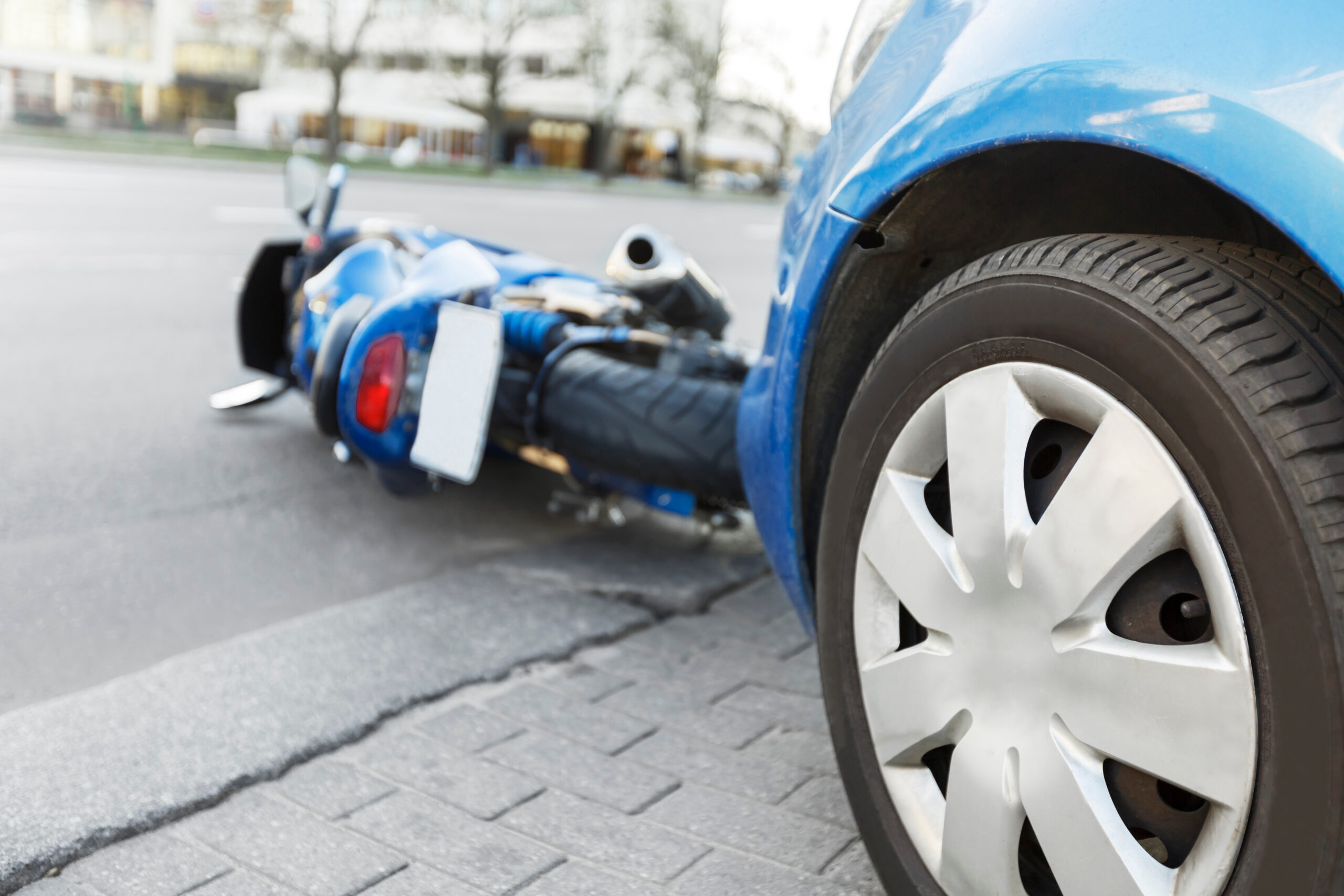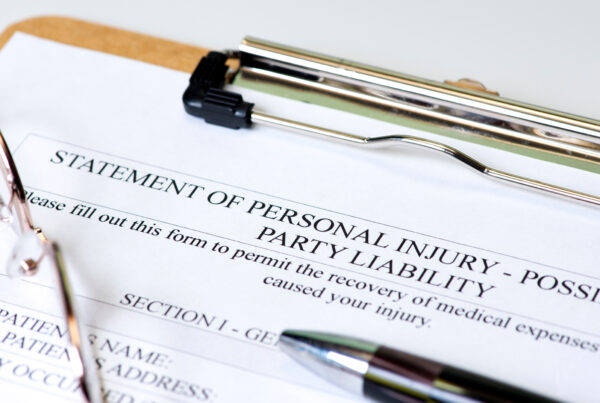Accidents happen all the time, but accidents involving motorcycles often result in catastrophic injuries that heavily affect the lives of the victims and their families. Understanding fault in these incidents is crucial for determining legal responsibilities and seeking adequate compensation. The personal injury lawyers in St. Louis at the Simon Law Firm are experienced in handling motorcycle accident cases, providing clients with the expertise they need to navigate the complexities of fault determination and legal recourse.
Understanding Fault in Motorcycle Accidents
After a motorcycle accident, it’s crucial to accurately determine fault. In these cases, fault refers to the legal responsibility for the accident and damages and involves assessing the negligence and adherence to traffic laws. This is often a complex task to navigate as various factors come into play, such as the rider’s behavior, other drivers or people on the road, and conditions at the time of the accident.
Motorcyclists’ Responsibilities on the Road
Everyone on the road has a duty to operate their vehicles safely and responsibly, and this includes motorcyclists. This includes obeying traffic laws, avoiding reckless behaviors, and practicing defensive driving techniques.
Motorcyclists in particular have specific rules and responsibilities outlined by the National Highway Traffic Safety Administration (NHTSA) that they must adhere to for safety while riding to prevent accidents and mitigate risks.
- Proper Licensing: All states require a motorcycle license endorsement that supplements the standard driver’s license. Most states will require riders pass a written and on-cycle skills test. Some may require riders to complete a state-sponsored rider education course. This additional education ensures riders have a clear understanding of proper road safety.
- Riding Practice: Riders should be comfortable on the bike as a non-confident rider is at risk of making dangerous decisions. It’s recommended to ride the motorcycle you intend to take on the road in a controlled area to become comfortable with the bike’s handling and responsiveness, not only in ideal conditions, but also in inclement weather or around hazards like potholes and road debris.
- Check Equipment and Be Responsible with Passengers: Before every ride, motorcyclists should check the tire pressure, tread depth, functionality of hand and foot brakes, headlights, signal indicators (if equipped), and fluid levels. Any cargo being carried should be securely loaded and balanced. If a passenger is riding along, they should get on the motorcycle only after the engine has started, sitting directly behind the driver, with both feet on the footrests at all times. The passenger should hold firmly to the driver’s waist, hips, or belt, while keeping movement to a minimum. Should the rider need to lean, such as in a turn, the passenger should lean in the same direction as the driver. The passenger needs to remain on the bike until the driver indicates it is safe to dismount.
- Ride Responsibly: Experienced motorcycle riders know the traffic laws and don’t take unnecessary risks. Riders should obey all traffic lights, signs, speed limits, and lane markings; ride with the flow of traffic, leaving plenty of room between the bike and other vehicles; and check behind and around while signaling before changing lanes. Most drivers are taught to drive defensively, but this is an especially important driving style for motorcyclists. Because motorcycles are sometimes difficult for other drivers to see, riders can make themselves more visible by applying reflective materials to the bike, keeping headlights on at all times, and wearing brightly colored clothing or safety vests.
- Never Drive Under the Influence: As for anyone on the road, riders should refrain from driving their motorcycle on any substance that could affect judgement, coordination, balance, throttle control, or ability to shift gears. This may include drugs, alcohol, and even some prescription medications. Even when fully alert, it’s impossible to predict the actions of others, so it’s essential to be prepared to react safely if and when it is necessary.
Most Common Causes of Motorcycle Accidents
Motorcycle accidents are caused by various circumstances that aren’t always in the rider’s control. Understanding and identifying these common causes helps when determining fault and in implementing preventative measures, boosting awareness on the road. Here are some of the most common causes of motorcycle accidents:
Accidents Caused by the Motorcyclist
- Speeding: Some motorcyclists do not take the power of the motorcycle seriously, excessively speeding on the road. Speeding reduces the rider’s reaction time and makes it more difficult to avoid accidents and effectively control the bike.
- Impaired Driving: Impaired driving is dangerous for both motorcycle riders and vehicle drivers. Operating a motorcycle under the influence of alcohol, drugs, or medication can impair judgment, coordination, and reaction times, increasing accident risk significantly.
- Lane Splitting: Traffic is frustrating, but driving between vehicle lanes is extremely dangerous. One slight shift by a vehicle toward the motorcycle can cause an accident. In some areas, lane splitting is legal, but that does not mean it is any less dangerous, especially if done at high speeds.
- Inexperience: Newer riders or those who have not participated in necessary education and training may have poor decision-making skills, overestimate current abilities, or be less able to handle unexpected situations, all of which can lead to an accident.
- Lack of Proper Safety Gear: Some safety gear, such as helmets and jackets, are brightly colored to improve visibility for other drivers. Although the gear can’t necessarily be blamed for the accident itself, not wearing the proper safety gear can make the outcome of the injury much worse than it would have been had the rider been wearing it.
Accidents Caused by the Other Vehicle
- Distracted Driving: Vehicle drivers are often distracted by phones, passengers, radio, food, and more. These distractions may cause them to fail to notice surrounding motorcycles, leading to a potential accident.
- Failing to Yield: Motorists will often fail to allow motorcycles to have the right of way at intersections or when changing lanes. If the motorcyclist does not realize the vehicle is not yielding, or notices too late, this could result in an accident.
- Improper Lane Changes: Drivers are responsible for checking blind spots and signaling when changing lanes. However, those who do not follow these important rules of the road can end up colliding with a motorcycle they may not see.
- Lack of Visibility: Motorcycles are quite a bit smaller than vehicles, and in certain situations, can be very difficult to see in blind spots. Drivers may fail to see the motorcycle when changing lanes, or can misjudge the speed and distance, resulting in an accident.
Other Causes
- Poor Road Conditions: Road hazards such as uneven payment, potholes, debris, or oil spills can be somewhat dangerous for all drivers, but for motorcycles, they can create significant risk. Encountering any of these can cause reduced stability, potentially causing riders to lose control.
Facing the Facts: Who is Typically at Fault in Motorcycle Accidents?
In many cases, fault in motorcycle accidents can be attributed to various causes. Rider error alone is not a primary cause of most motorcycle accidents. Most motorcycle accidents involving another vehicle were found to be caused by the other driver’s failure to see the motorcycle. In roughly 66% of analyzed motorcycle accidents, the other party involved was found to be in violation of the motorcyclist’s right of way, causing the accident. However, motorcyclists can cause many accidents through their actions. As stated previously, motorcycle accidents happen for a variety of reasons, so it’s important to understand the potential scenarios before pursuing legal action and seeking compensation.
Motorcycle Accident Statistics
The motorcycle accident fault statistics provide valuable insights into accident frequency, common fault scenarios, and resulting outcomes. According to the most recent NHTSA data from 2021, 5,932 motorcyclists were killed in accidents, making up 14 percent of all traffic fatalities. This is an increase from 5,579 fatalities (8 percent) in 2020. Unfortunately, this is the highest number of recorded motorcycle fatalities since the Fatality Analysis Reporting System (FARS) began collecting data in 1975.
Additional 2021 data:
- 82,686 motorcyclists were estimated to be injured, a 5 percent increase from 2020
- 36 percent of motorcyclists involved in fatal crashes were riding without a valid motorcycle license
- In fatal crashes involving alcohol impairment, motorcycle riders made up the highest percentage with 28 percent of drivers (24% of passenger vehicles, 20% of light trucks, and 3% of large trucks)
- 43 percent of motorcycle riders who died in single-vehicle crashes were alcohol-impaired
- In states without universal helmet laws, 55 percent of motorcyclists killed were not wearing helmets; In states with universal helmet laws, 9 percent of motorcyclists were killed
- 92 percent of motorcycle accidents occurred on non-interstate roads; 8 percent of motorcycle accidents occurred on interstates
- 57 percent of motorcycles involved in fatal accidents were collisions with other motor vehicles
- 24 percent of fatal motorcycle accidents were caused by collisions with stationary objects
- 3,052 fatal two-vehicle accidents involved a motorcycle and other vehicle
- 43 percent occurred when the motorcycle was continuing straight, passing, or overtaking another vehicle and the other involved vehicle was turning left
- 21 percent of these accidents occurred when both the vehicle and motorcycle were driving straight
Legal Implications of Fault in a Motorcycle Accident
Being at fault in a motorcycle accident can result in significant legal and financial consequences for all parties involved. It may affect insurance coverage, liability claims, and compensation options. Seeking an experienced motorcycle accident lawyer or car accident lawyer is crucial to protecting your rights and securing fair compensation for injuries and damages.
If a driver or other party was negligent and the accident resulted in serious injury to the motorcyclist, the rider will most likely be encouraged to file a personal injury lawsuit to recover compensatory damages. They will most likely need damages for medical expenses, out-of-pocket expenses, lost income, follow-up care, rehabilitation, disability, pain and suffering, and more. Motorcycle crashes ending in catastrophic injury may require input from multiple experts, such as accident reconstruction specialists or medical experts.
In the event a motorcyclist is at least partially to blame for the accident that caused their injuries and the state follows comparative negligence laws, the rider may only be able to recover the percentage of damages they are not responsible for. In states adhering to contributory negligence, motorcyclists found to be 1 percent or more at fault in the accident will be unable to recover any damages.
Protect Your Rights After a Motorcycle Accident with Legal Representation from Simon Law Firm
Recently involved in a motorcycle accident? It’s time to get the compensation you deserve. At the Simon Law Firm, our team of experienced personal injury lawyers specialize in motorcycle accident cases, advocating for victims and providing support through the challenges. Start a conversation today to schedule a complimentary consultation.







